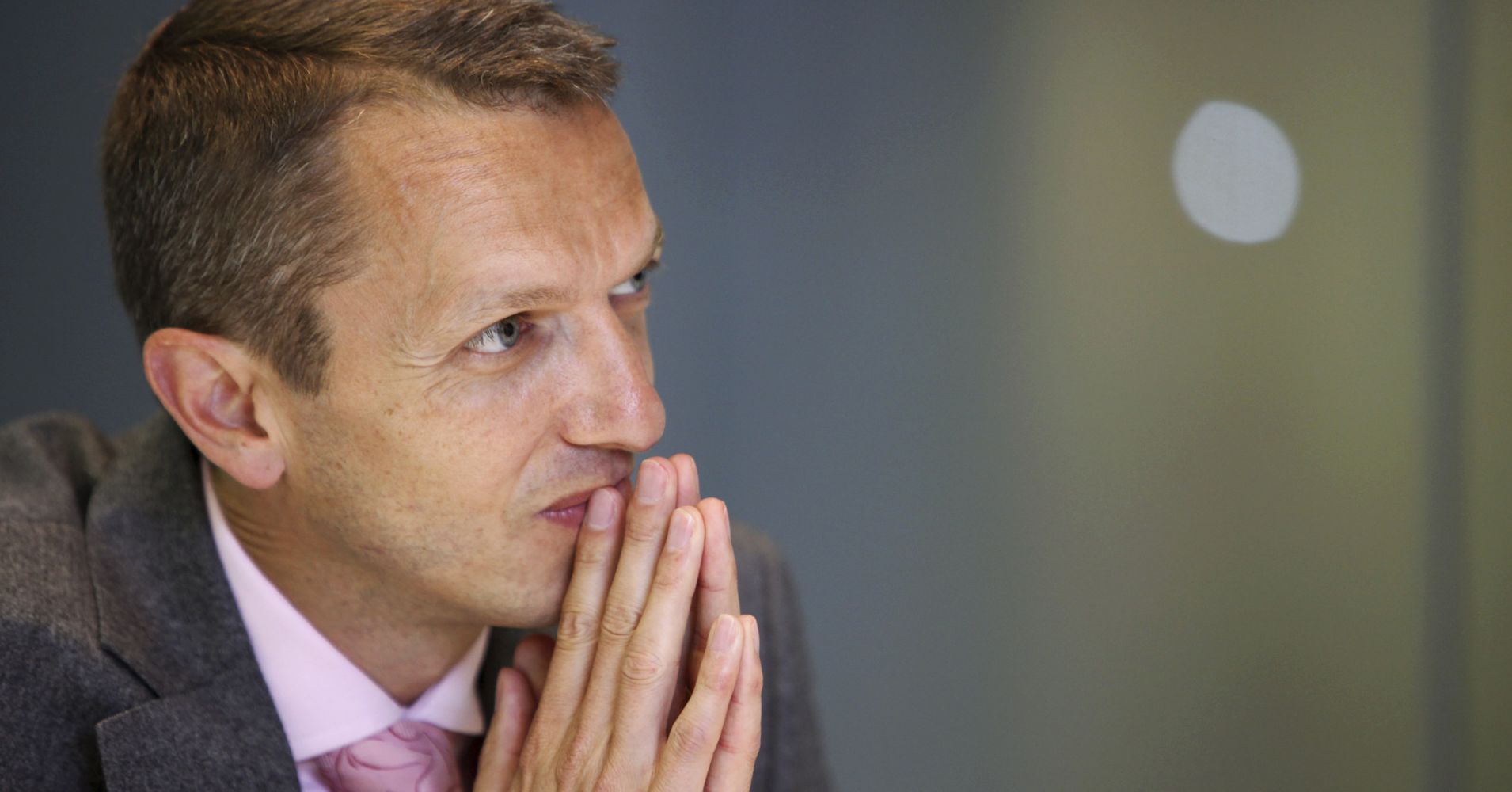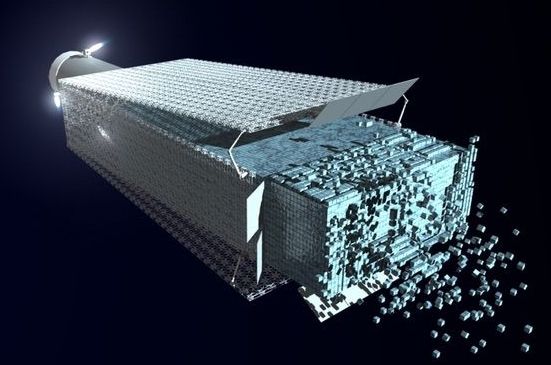But there are still many tests and hurdles before SpaceX’s test launch in April 2019.
Get the latest international news and world events from around the world.

Bank of England’s chief economist warns A.I. could threaten ‘large’ amount of jobs
“This is the dark side of technological revolutions and that dark side has always been there,” Haldane added. “That hollowing out is going to be potentially on a much greater scale in the future, when we have machines both thinking and doing — replacing both the cognitive and the technical skills of humans.”
Haldane said that the so-called Fourth Industrial Revolution — a digitally-driven paradigm shift similar to previous industrial revolutions in the West — had the potential to displace numerous jobs and leave people “technologically unemployed.”
“Each of those [industrial revolutions] had a wrenching and lengthy impact on the jobs market, on the lives and livelihoods of large swathes of society,” Haldane told the BBC.
The BOE economist cautioned that previous industrial revolutions resulted in “heightened social tensions,” “financial tensions” and “inequality.” The First Industrial Revolution, which took place during the Victorian era, transformed Britain’s economy, leading to the creation of ground-breaking industrial innovations including the steam train and advanced machine tools, all the while resulting in layoffs especially in industries like textiles.

Ecosystems are getting greener in the Arctic
In recent decades, scientists have noted a surge in Arctic plant growth as a symptom of climate change. But without observations showing exactly when and where vegetation has bloomed as the world’s coldest areas warm, it’s difficult to predict how vegetation will respond to future warming. Now, researchers at the U.S. Department of Energy’s Lawrence Berkeley National Laboratory (Berkeley Lab) and UC Berkeley have developed a new approach that may paint a more accurate picture of Arctic vegetation and our climate’s recent past – and future.
In a study published online Aug. 20 in Nature Climate Change, the researchers used satellite images taken over the past 30 years to track – down to a pixel representing approximately 25 square miles – the ebb and flow of plant growth in cold areas of the northern hemisphere, such as Alaska, the Arctic region of Canada, and the Tibetan Plateau.
The 30-year historic satellite data used in the study were collected by the National Oceanic and Atmospheric Administration’s Advanced Very High Resolution Radiometer. The data was processed by Boston University, and is hosted on NEX – the NASA Earth Exchange data archive.

Researchers are developing fast-charging solid-state batteries
Solid-state batteries contain no liquid parts that could leak or catch fire. For this reason, they do not require cooling, and are considered to be much safer, more reliable, and longer lasting than traditional lithium-ion batteries. Juelich scientists have now introduced a new concept that allows currents up to 10 times greater during charging and discharging than previously described in the literature.
Low current is considered one of the biggest hurdles in the development of solid-state batteries because the batteries take a relatively long time to charge, usually about 10 to 12 hours in the case of a fully discharged battery. The new cell type that Jülich scientists have designed, however, takes less than an hour to recharge.
“With the concepts described to date, only very small charge and discharge currents were possible due to problems at the internal solid-state interfaces. This is where our concept based on a favourable combination of materials comes into play, and we have already patented it,” explains Dr. Hermann Tempel, group leader at the Juelich Institute for Energy and Climate Research (IEK-9).

New study identifies strategies in US climate litigation
The courts have played a central role in climate change policy, starting with a landmark Supreme Court case that led to the mandatory regulation of greenhouse gases in the United States. How do the courts address climate cases today? Who wins, who loses and what kinds of strategies make a difference in the courtroom?
Researchers at the George Washington University (GW) have published a study in Nature Climate Change that for the first time analyzes all U.S climate change lawsuits over a 26-year period.
“This first-of-a-kind study outlines the types of climate change lawsuits that are more likely to win or lose, and why,” said lead author Sabrina McCormick, Ph.D., MA, an Associate Professor of Environmental and Occupational Health at GW’s Milken Institute School of Public Health (Milken Institute SPH). “Efforts to affect U.S. climate change policy should consider current trends in the courtroom.”

Rethinking the Mars terraforming debate
In late July, Bruce Jakosky and Christopher Edwards published a paper titled “Inventory of CO2 available for terraforming Mars,” which was sponsored by NASA. The paper analyzed the amount of volatiles, primarily carbon dioxide (CO2), on or in Mars currently, and concluded reasonably that there are not enough volatiles available on Mars to terraform it sufficiently for a person to not need a pressure suit. Jakosky is the principal investigator for MAVEN, the NASA Mars orbiter studying the planet’s atmosphere. He and his co-author wrote what is technically an accurate paper, in spite of what was an existing mild controversy over the amount of some volatiles in the soil and regolith of Mars.

The Life Extensionist’s Guide to Logical Fallacies
A handy guide to logical fallacies for life extensionists.
When debating life extension, or debating in general, it may happen that participants commit logical fallacies—that is, their arguments contain logically invalid reasoning. In practice, this often means that people incorrectly come to certain conclusions that do not actually follow from the premises; if they appear to follow, it’s indeed because fallacious reasoning was used.
Logical fallacies can be tough to spot, both for the people committing them and for the people listening; rejuvenation advocates would therefore benefit from familiarizing with common fallacies committed during debates about life extension so that they will both be able to detect them in other people’s arguments and avoid committing any themselves.
The following is a list of common logical fallacies that usually show up during life extension debates. It may be useful for your advocacy efforts, but bear in mind that the right way to go about rebutting fallacious reasoning is not simply pointing out “You committed a fallacy; your argument is invalid”; in fact, you’d better avoid mentioning the word “fallacy” altogether. What you are likely to get this way is simply a lot of eye-rolling; your message will probably not get across, and you will come across as an insufferable pedant, even if you’re right. I’ve personally met people who don’t seem to think that a logical fallacy in their reasoning is such a big deal. Debating with such people is probably a waste of time, but in general, people might be more receptive if you politely explain why their reasoning doesn’t work, providing different examples and avoiding a lecturing attitude at all costs.

Space Hotels
Would you stay in a space hotel?
DISTANT DREAM — Reverse
Distant Dream (Poland), “Reverse” (feat. Stel Andre) from the album “It All Starts From Pieces” (2017), Instrumental Post rock | Post metal.
• Official Distant Dream band links
https://distantdream.bandcamp.com/
https://www.facebook.com/distantdreammusic/
• Similar bands / Sounds like / Influences:
—————————————————–
Seeming Emptiness, Captains of Sea and War, Apoa, Microtonner, Exxasens, Russian Circles, Gray Souvenirs, Ι Αm Νo Ηero, Antethic, Callisto, Nyobe, Doomina, Leech, Then They Flew, Sioum, Moonlit Sailor, Nevermind the Name, If These Trees Could Talk, Servants of Silence, Líam, No Respect for Beauty, A Light In The Dark, Macáes, Loveless, This Will Destroy You, Oh Hiroshima, This Is Your Captain Speaking, Pray for Sound, Tuber, Calf, Quiet Pliz, Icaro, From Oceans To Autumn, Caspian, We.Own.The. Sky, Isis, Pelican, Red Sparowes, Cult of Luna, Cloudkicker, Minsk, Intronaut, Toundra, Envy, Jesu.
• Follow “Winter’s Dusk In Mistful Abyss” on facebook.
https://www.facebook.com/WintersDuskInMistfulAbyss.official/
• ©Winter’s Dusk In Mistful Abyss (wdima Official Channel)
(Watch in HD for better video & audio quality)